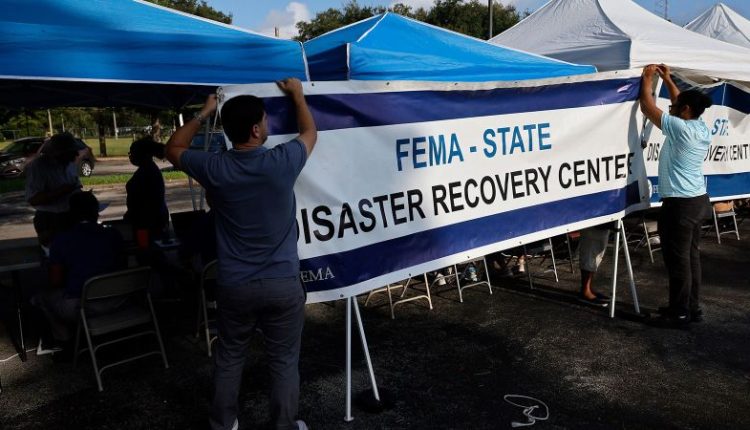The Biden administration is asking Congress for an additional $4 billion to replenish the Federal Emergency Management Agency’s Disaster Relief Fund, pointing to what it says is a particularly brutal stretch of natural disasters across the nation.
Friday’s request – which is in addition to one made last month for $12 billion – comes a day after President Joe Biden called on Congress to pass more relief funds for FEMA during remarks on Hurricane Idalia, which made landfall in Florida earlier this week and has caused damage in several states.
“Given the intensity of disaster activity around the nation – including fires on Maui, in Louisiana, and across the country, massive flooding in Vermont, and now a major hurricane that hit Florida and the Southeast – the Administration is seeking an additional $4 billion for FEMA’s Disaster Relief Fund (DRF),” a spokesperson for the Office of Management and Budget told CNN in a statement Thursday.
“The President has been clear that we’re going to stand with communities across the Nation as they recover from disasters for as long as it takes, and the Administration is committed to working with Congress to ensure funding for the DRF is sufficient for recovery needs. We urge Congress to take swift action on supplemental appropriations.”
As the White House pushes Congress to pass a short-term spending bill to avoid a shutdown and ensure continuity of government services, the president has signaled that he’s ready to blame Republicans if there isn’t enough funding to respond to disasters.
Passing more disaster funds for FEMA will be at the top of Congress’ to-do list when it returns from recess after Labor Day. Senate Majority Leader Chuck Schumer told reporters Tuesday he wants to get it “done as quickly as possible.” But some conservative House Republicans have signaled they’re opposed to the overall funding request because of the additional money it contains for Ukraine.
Biden – who is scheduled to visit Florida on Saturday after formally approving a major disaster declaration for the state – questioned in his remarks Thursday how some lawmakers could debate additional funding for FEMA in the wake of the hurricane and wildfires in Maui.
“I’m calling on Congress to make sure you’re able to have the funds to be able to continue to show up and meet the needs of the American people to deal with immediate crises that we’re facing right now, as well as the long-term commitments we have to make to finish the job in Maui and elsewhere,” Biden said, later adding, “We need this money done, we need this disaster relief request met, we need to do it in September, we can’t wait.”
CNN reported last month that FEMA’s relief fund is already running out of money in a year that’s setting records for billion-dollar weather disasters.
FEMA chief Deanne Criswell echoed the president’s call for additional funding, telling CNN Thursday that FEMA has been projecting a deficit for the relief fund “sometime in September and so on” and entered a process called “immediate needs funding” this week.
“That means that we are going to prioritize the remaining funding that’s within the Disaster Relief Fund to go to lifesaving activities,” Criswell told “CNN This Morning,” adding that the practice has been used eight times in the past and “it allows us to make sure that we can have all funding available to support those lifesaving activities.”
While Criswell emphasized that recovery work “doesn’t stop” and the lack of additional funding “just delays the obligations,” a FEMA official told CNN that there’s growing concern inside the agency the funding could lapse if Congress doesn’t pass a spending bill.
It’s been a record-breaking year for expensive disasters, including flooding atmospheric rivers in California and a deadly tornado outbreak. The federal government has tallied 15 weather-related disasters that have each exceeded $1 billion in damages – a new record for the first seven months of the year, according to data from the National Oceanic and Atmospheric Administration.
Read the full article here

